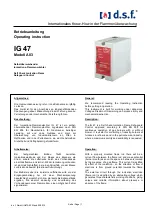
Connect
Connect
Connect the
the
the Air
Air
Air Supply
Supply
Supply Hose
Hose
Hose to
to
to the
the
the Cabinet
Cabinet
Cabinet
Use a wrench to connect the air supply hose between
the air supply and the air inlet (A) on the isolation
cabinet. The maximum air pressure is 100 psi (0.7
MPa, 7.0 bar). A minimum of 70 psi (0.5 MPa, 5.0
bar) is needed to operate the system.
For best performance use an air supply hose with a
minimum inner diameter of 3/8 inch (10 mm). Do not
use quick disconnect connectors.
Install a bleed type air valve (AV) near the cabinet
to easily turn off the air supply during installation or
service.
Figure 16 Air and Fluid Inlets
Connect
Connect
Connect the
the
the Fluid
Fluid
Fluid Supply
Supply
Supply Hose
Hose
Hose to
to
to the
the
the
Cabinet
Cabinet
Cabinet
On systems that are not color change enabled:
Use a wrench to connect the fluid supply hose
between the fluid supply and the fluid inlet (F) on the
isolation cabinet. The maximum fluid pressure is 100
psi (0.7 MPa, 7.0 bar).
Note
Do not overtighten as this will rotate the inlet
valve and cause an issue with the flexible
hose on the inside of the cabinet. The valve
outlet on the inside of the cabinet should be
pointed upward.
Note
For the system to function correctly, the inlet
fluid pressure must not exceed the inlet air
pressure.
Consider installing a manual fluid shut-off valve (FV)
close to the cabinet to easily turn off the fluid supply
during installation or service.
On systems that are color change enabled:
Connect the fluid supplies to the inlet color change
valves. Ensure that the air line, flush material, and
dump hose are connected to the correct color change
valves. If the dump valve is not used, plug the fluid
port on the dump valve.
Valve
Valve
Valve Number
Number
Number
Valve
Valve
Valve Purpose
Purpose
Purpose
Valve 1
Air line
Valve 2
Flush material
Valve 3
Dump hose
Valve 4
Color 1
Valve 5
Color 2
Valve 6
Color 3
22
3A8493A
















































